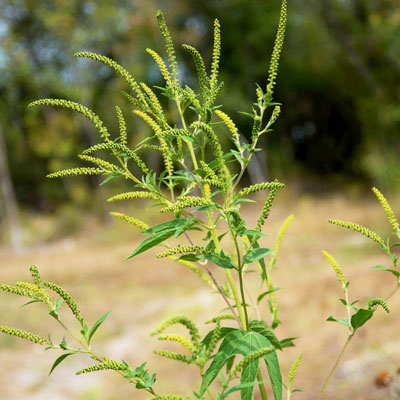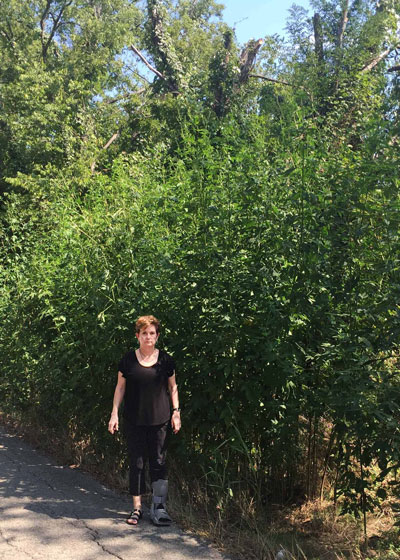Revolting Ragweed

It’s one of the biggest sources of allergic reactions each autumn. Ragweed, one of the 17 species of genus Ambrosia, has roared into full bloom for another year.
It’s native to 49 states (all except Alaska). Its pollen, like that of oaks, pecans, cedars, and grasses, is carried for miles by wind. It’s really a very efficient way for tiny pollen grains to be transported. Bees don’t have to be bothered. All it takes is a gentle breeze and your allergies are put on alert.

And not only can it grow tall, it can also grow in masses. It’s not uncommon to see stands of it at the edges of woodlands 20 feet deep and a quarter mile long in wetter parts of Texas. Think of the pollen that many plants could produce. A couple of swipes with a tractor and mower could wipe all that out in late summer, but there’s just so much of it. Your allergist will have medicines to help with your agonies.

I did a quick Web search to see if our COVID-19 masks might help with ragweed pollen, and I came up with a ton of positive matches. They also remind us to wash our masks daily to get rid of the pollen they’ve trapped, and they even warn us that ragweed allergies have symptoms similar to the virus. (Yikes!)
From Nebraska.
https://www.msn.com/en-us/health/medical/ragweed-allergies-have-similar-symptoms-to-covid-19/ar-BB18aoQC
From New York.
https://www.newsday.com/news/health/coronavirus/pollen-allergies-symptoms-covid-1.44832280

